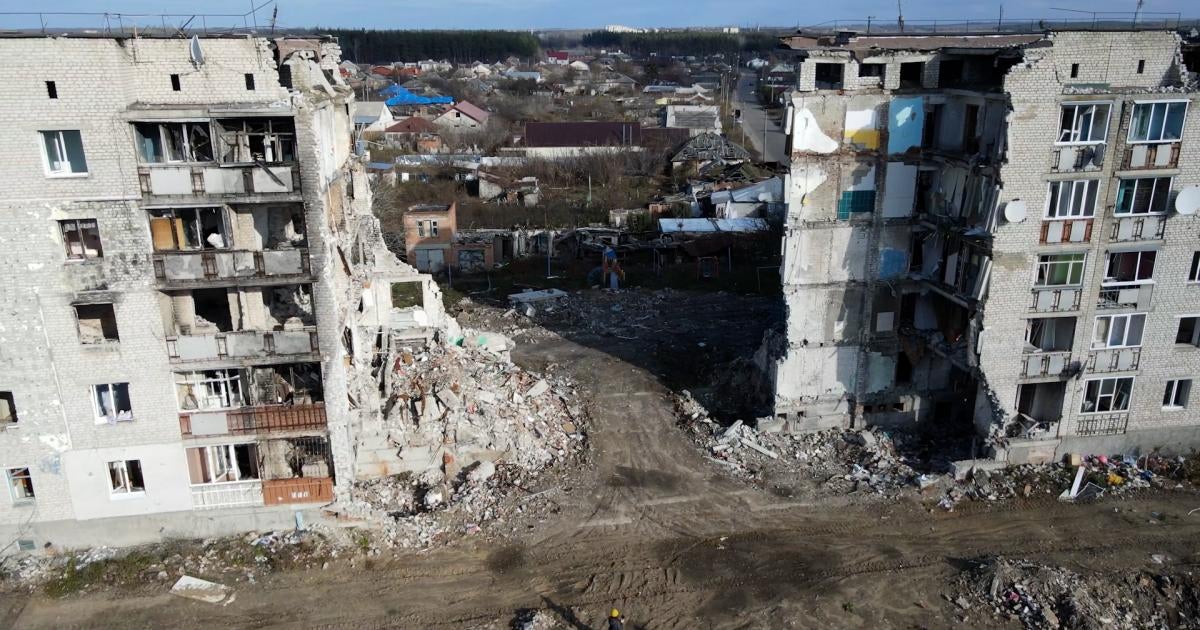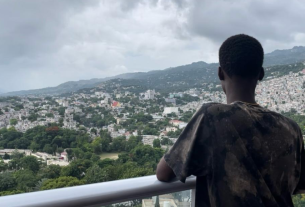|
Getting your Trinity Audio player ready...
|
(Kyiv, March 22, 2023) – Russian forces used a large air-delivered munition on an apartment building on March 9, 2022, in Izium, eastern Ukraine, in an attack that killed at least 44 civilians and violated the laws of war, Human Rights Watch said today in a web report.
The report, “A Thousand Explosions in My Ears,” uses survivor testimony, photos, videos, and 3D modeling of the building at 2 Pershotravneva Street to show the devastating effects of the attack – one of the single deadliest for civilians since Russia’s full-scale invasion of Ukraine in February 2022. Dozens of civilians were sheltering in the basement, and while the building was close to the front lines, Human Rights Watch found no evidence that Ukrainian forces were using the building for military purposes at the time.
“Generations of families in the basement were entombed by this single attack,” said Richard Weir, senior crisis and conflict researcher at Human Rights Watch. “We found no evidence to justify treating the apartment building as a legitimate military target, or that Russian forces tried to avoid or minimize the destruction of so many civilian lives.”
The report details the attack and tells the story of Mykhailo Yatsentiuk, an electrician in his sixties who had lived in the building with his wife, Natalia, for three decades, raising three children and six grandchildren. Natalia and 6 others from his family, ages 3 to 96, died in the attack. Yatsentiuk survived because he left the basement to make his granddaughter tea.
The five-story building is in Izium’s central district, which Ukrainian forces had control of until late March. It is close to the Donets River and a strategic footbridge. In the days before the attack, there were sustained hostilities in the area. Russian forces took full control of the city by the end of the month and occupied it and the surrounding area for nearly six months. Outside of Izium, little was known about the attack that destroyed 2 Pershotravneva Street until Ukrainian forces retook control of the area in September.
Between late September and mid-March 2023, Human Rights Watch interviewed 21 people from Izium, including survivors and witnesses, victims’ family members, and emergency responders. Human Rights Watch also inspected physical evidence at the scene, analyzed satellite imagery, and took photographs and videos, including from drones.
In the days before March 9, Ukrainian forces were in the general area around the building as they attempted to keep Russian forces from the center of the city. One witness saw Ukrainian forces moving along the street next to the building a few days before the attack and firing from near the footbridge, about 200 meters from the building.
Survivors and local residents said that Russian military fixed-wing aircraft had been constantly flying overhead in the days before the attack. Nearby buildings sustained damage, most likely by Russian ground forces firing from across the river, and 2 Pershotravneva had been hit and damaged, but without civilian casualties, to the best of Human Rights Watch’s knowledge.
However, on the morning of March 9, around the same time, two buildings including 2 Pershotravneva Street took direct hits from air-delivered munitions, most likely of a similar type. The second building was another multi-story apartment building across the street from 2 Pershotravneva to the southeast, less than 100 meters away, which sustained similar damage. Human Rights Watch did not investigate this attack, but emergency responders and local residents said that there were three known casualties, two of whom were said to be Ukrainian forces.
Survivors and witnesses of the attack on 2 Pershotravneva said the attack happened around 9 a.m. and that dozens of the building’s residents and others from the surrounding area had sought shelter in the basement. An emergency worker who was in the area said that he heard aircraft and explosions after 8:30 a.m.
The munition struck the middle of the building, collapsing all five stories of the central part onto the basement, and destroying multiple exits. The rubble buried many of the people in the basement. Using a 3D model of the building, Human Rights Watch determined that the attack resulted in a hole at least 15 meters wide in the building.
Witnesses who were in the basement or lower floors said they had not seen Ukrainian forces in or directly around the building just before or at the time of the attack. One local resident who had been in the basement, said others there saw Ukrainian soldiers come into the basement days earlier and ask the building manager for keys to the attic to check it.
During inspections of the building and its premises, Human Rights Watch found no signs of established Ukrainian firing positions. None of the residents interviewed said they saw or heard firing from the building. In three locations in the eastern portion of the building, researchers found more than a dozen expended casings from small arms projectiles, most on two interior stairwell landings on lower floors. It was not possible to determine who fired this ammunition or how it got there. One resident said that, in the months after the attack, Russian forces came into the building occasionally to take food supplies from the apartments. In May, he said he saw them bring small boxes into the building, and the resident said he later saw expended casings in the stairwell and on a windowsill in the building.
Two emergency services workers said that fighting in the area prevented them from starting recovery efforts until late March. They spent about a month digging bodies out of the rubble, at first with bare hands and then with equipment. One said that they recovered 51 bodies, 44 of them identifiable, and that they did not discover any small arms or light weapons there. The emergency workers and three witnesses to the attack who were there for some, or all of the exhumations, said they did not see any bodies in military uniforms.
The Ukrainian parliament commissioner for human rights, Dmytro Lubinets, said 54 people were killed. Human Rights Watch obtained three lists of those who died or remain missing, and a list of personal possessions found at the site, including identity documents.
Based on interviews with witnesses and those who recovered bodies, as well as analysis of social media posts, Human Rights Watch corroborated the deaths of at least 44 people. However, that number is most likely higher because some bodies could not be identified, and some bodies had been buried before the emergency workers’ exhumations.
Human Rights Watch was not able to identify the type of weapon used in the attack because most of the remnants were apparently buried in the rubble or removed by Ukrainian authorities. However, the extensive but relatively contained destruction of the partially collapsed building is consistent with the use of a large, air-delivered munition, such as the FAB-500-series bomb, with delayed-action fuze.
A delayed-action fuze means the munition is set to detonate after it hits the target, so it could have penetrated the multiple floors of the building before detonating, causing catastrophic damage.
Human Rights Watch wrote to the Russian defense minister, Sergei Shoigu, on January 31, summarizing the findings and asking for information, including whether any Russian authorities were investigating the attack. Human Rights Watch has not received a response.
Under international humanitarian law, or the laws of war, warring parties must always distinguish between combatants and civilians, and only target military objectives. They must also take all feasible precautions to minimize harm to civilians, including by providing effective advance warnings of attacks.
Indiscriminate attacks, which use a method or means of combat that fails to distinguish between military objectives and civilians or civilian objects, and disproportionate attacks, in which the expected harm to civilians and civilian property is excessive in relation to the concrete and direct military gain anticipated, are strictly prohibited.
The use of explosive weapons with wide-area effects in populated areas heightens concerns of unlawful, indiscriminate, and disproportionate attacks. These weapons have a large destructive radius, and their use should be avoided in populated areas.
Anyone who commits serious violations of the laws of war, such as indiscriminate or disproportionate attacks, with criminal intent – that is, deliberately or recklessly – is responsible for war crimes.
“The survivors and victims’ family members deserve answers and justice,” Weir said. “The devastation and pain will never be erased, but accountability can help enforce that these kinds of acts will not be tolerated.”



